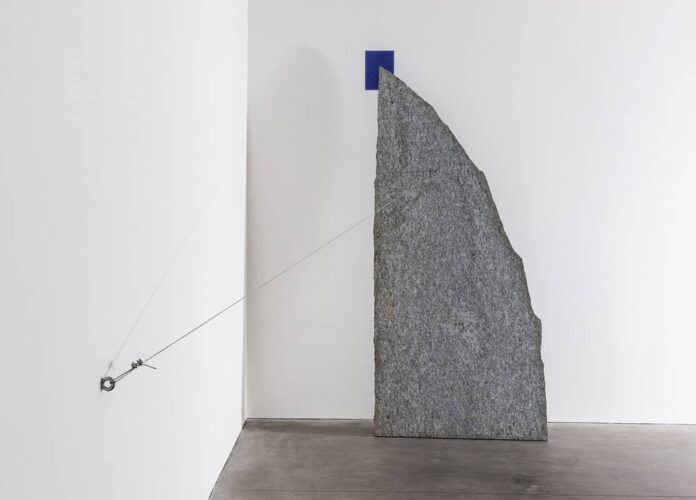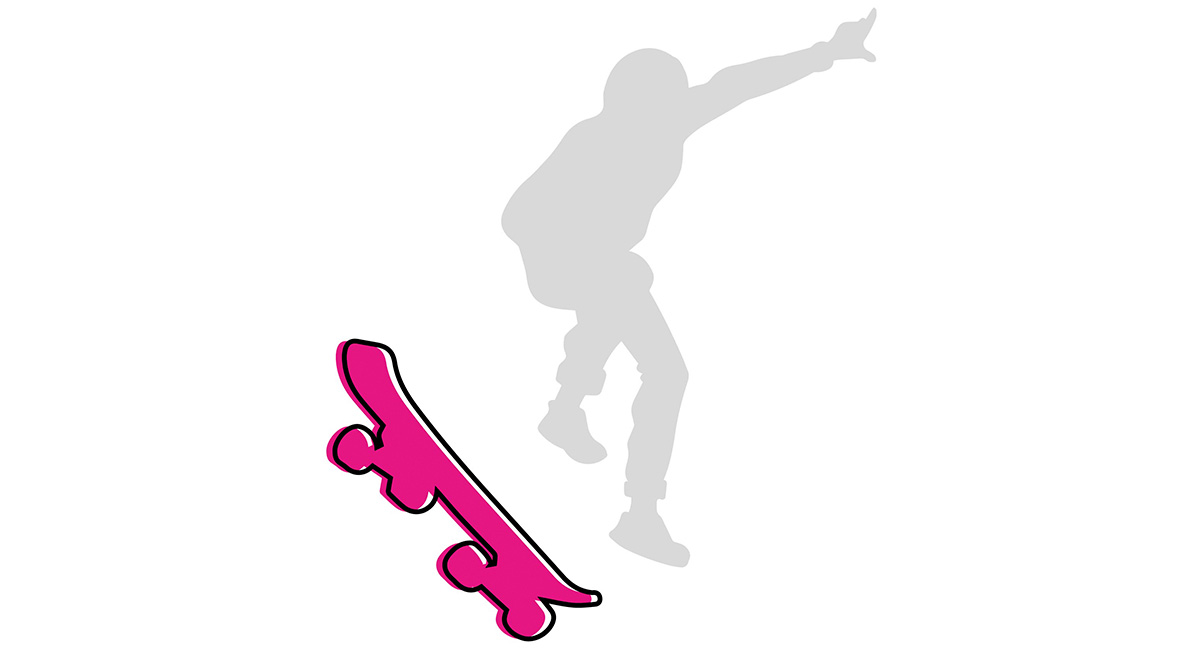When the time acts in the present, Giovanni Anselmo
The audacity but at the same time the measure of the one who has occupied the space that has been offered to him without cluttering (Gallery Lia Rumma in Milan) speak immediately. A work of impeccable coherence and clarity: those who do not see are simply blind.
Giovanni Anselmo, class of ’34, still has a lot to teach: the opus in the center of the room on the second floor, from 1968, is of the same nature as his famous “Salad”, but Cotton tastes of Covid 2019/22: Time plays in the present by forcing the guest to feed the vase daily; and also plays on a sort of eternity: in the photographic images on the ground floor, in which the sun slowly sets over the sad Po plain itself.
Lopsided bas-reliefs over the observer
And then he plays at the moment of catastrophe: in the apparent precariousness (but what is art if not appearance and precariousness?) of many of the works present, that of the 300 kg of granites metaphorically hung on painter’s canvases, in the tension present under the tip of the slab towards “Oltremare” or under the lopsided bas-reliefs over the observer, always on the ground floor. Not all of Anselmo’s works are at the Lia Rumma, however what is there demands maximum attention (as in the “Acrylics” superimposed on the squared blocks of granite on the wall of the intermediate floor).
Giovanni Anselmo, such cleanliness is rare today
Enough with the description, if you can, don’t miss it: such cleanliness is rare today. I only felt one absence: that of his “Hand that indicates” the variegated abstract and vaguely metaphorical landscape of the present. What is missing? Maybe the people, the people? But who cares, the people are oxen, art is elitist, dear Beuys, not out of pocket, but of antidotes against suffering; and then people don’t give a shit about cleanliness and rigor, they want to ignore death, they believe in the “casino”, in performances to the rhythm of rock.
Physical effort of pulling up sacks and sacks of cement
Perhaps the sense of the weight of life? But here, without rhetoric, without indulging in romanticisms, there’s a lot of bullshit: it’s the physical effort of pulling up sacks and sacks of cement every day to put in the cement mixers. It is the real danger under the tip towards the sea of a small rectangle of blue applied with a spatula. It is the sense of solitude of a sad plain or of a firmament made of stars within easy reach, parallelepipeds brought to light. Dreamlike substitution, displacement, but with the language of sculpture. Euclid is alive and bursts with energy from every pore, it is what has always distinguished sculpture from simply plastic values.
Yes, to really want to be oneself, I’m missing something: the void filled by my imagination, indeed not only mine, collective, and emptiness not only mental, but physical, present. A fundamental step backwards: this is the maximum of cleanliness, time and energy.
Il tempo gioca nel presente
L’audacia ma nello stesso tempo la misura di colui che ha occupato, senza ingombrarlo, lo spazio che gli è stato offerto (Lia Rumma, a Milano) parlano da subito. Un lavoro di una coerenza e di una chiarezza ineccepibili: chi non vede è semplicemente cieco. Giovanni Anselmo, classe ’34, ha ancora da insegnare molto: l’opera al centro della sala al secondo piano, del 1968, è della stessa natura della sua famosa “Insalata”, ma il Cotone sa di Covid 2019/22. Il Tempo gioca nel presente costringendo l’ospite ad alimentare il vaso quotidianamente, e gioca anche su una sorta di eternità: nelle immagini fotografiche del piano terra, in cui il sole cala lentamente sulla stessa tristissima pianura padana.
I bassorilievi di Giovanni Anselmo sbilenchi
E poi gioca all’attimo della catastrofe: nella precarietà apparente (ma cos’è l’arte se non apparenza e precarietà?) di molte delle opere presenti, quella dei 300 kg dei graniti appesi metaforicamente alle tele da pittore, alla tensione presente sotto la punta della lastra verso “Oltremare” o sotto i bassorilievi sbilenchi sull’osservatore, sempre al piano terra. Non c’è tutto Anselmo, dalla Rumma, comunque quello che c’è pretende attenzione massima (come negli “acrilici” sovrapposti ai blocchi squadrati di granito sulla parete del piano intermedio).
Tanta pulizia è rara oggi
Basta con la descrizione, se potete non perdetevela: tanta pulizia è rara oggi. Una sola assenza ho sentito: quella della sua “Mano che indica” il variegato paesaggio astratto e vagamente metaforico del presente. Cosa manca? Forse la gente, il popolo? Ma chissenefrega, il popolo è bue, l’arte è elitaria, caro Beuys, non di tasca, ma di medicine contro la sofferenza; e poi la gente se ne fotte della pulizia e del rigore, vuole ignorare la morte, crede nel casino, nello spettacolo a ritmo di rock.
La fatica fisica di tirar su tutti i giorni sacchi e sacchi di cemento
Forse il senso del peso della vita? Ma qui, senza retorica, senza indulgere a romanticismi, ce n’è a strafottere: è la fatica fisica di tirar su tutti i giorni sacchi e sacchi di cemento da infilare nelle betoniere. È il pericolo reale sotto la punta verso il mare di un piccolo rettangolo di blu a spatola. È il senso di solitudine di una pianura triste o di un firmamento fatto di stelle a portata di mano, parallelepipedi citati in luce. Sostituzione onirica, spostamento, ma col linguaggio della scultura. Euclide è vivo e sprizza energia da tutti i pori, è ciò che da sempre distingue la scultura dai valori semplicemente plastici.
Sì, a voler esser veramente se stessi, qualcosa mi manca: il vuoto colmato dalla mia immaginazione, anzi non solo mia, collettiva, e vuoto non solo mentale, ma fisico, presente. Un passo indietro fondamentale: questo è il massimo di pulizia, di tempo e di energia.
Dello stesso autore: Fuori dai denti/ Gustav Sjöberg, necessario non incoraggiare la poesia








